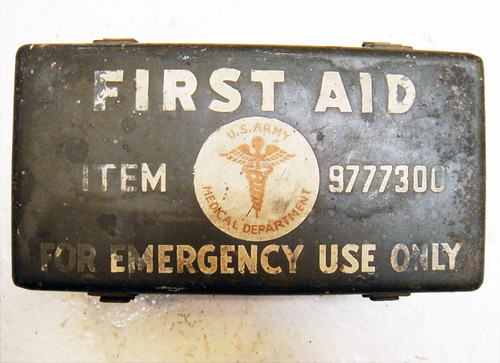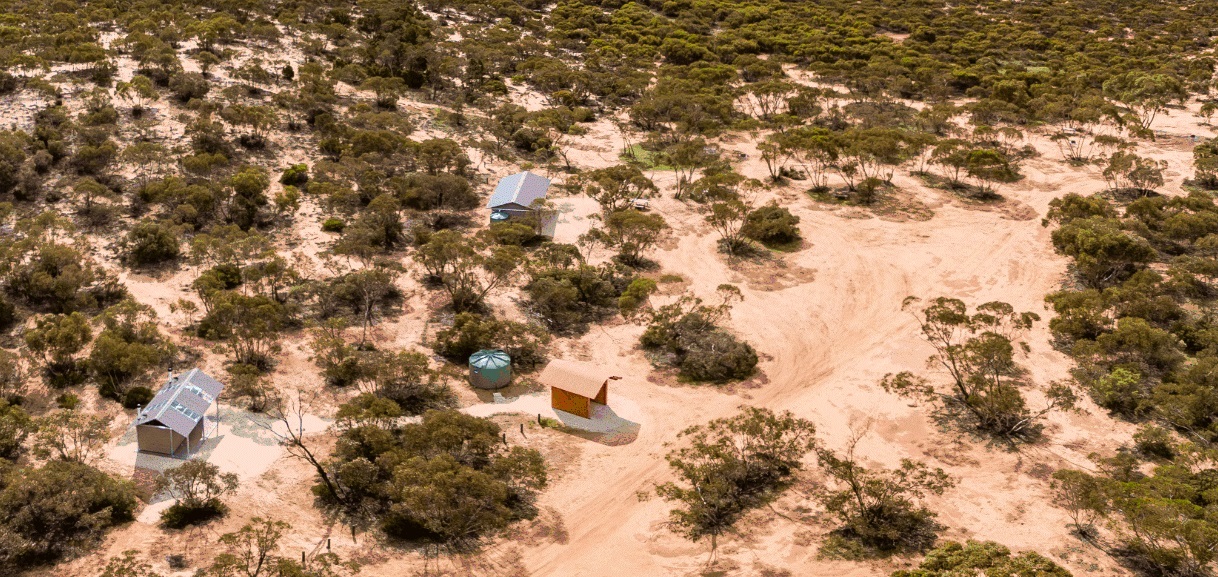Now is a great time to get your vehicles ready for a calendar full of trips in 2018, the club has compiled a recommended equipment list, for the gear and equipment you may want to consider prior to taking part in club trips.
The gear ranges from “get you out of trouble” recovery equipment through to “useful but you can probably get away without it”. If you’d like advice on what to get, or have any questions, post on the members-only Facebook Group, ask someone at a club meeting or inquire at one of the below local businesses.
Trip leaders also may request specific gear or vehicle requirements depending on what they plan to encounter or the difficulty level of the trip.
The club also has agreed discounts with, and recommends the following local businesses in Bendigo – Harrisons 4WD Centre and Bendigo Towbars & TJM 4WD Centre
Must Haves (Mandatory)
Members wishing to attend trips are expected to have these items as a bare minimum, for safety reasons.
UHF Radio

Yes, a CB radio! flickr photo by cee emily shared under a Creative Commons (BY-NC) license
Preferably mounted in your vehicle, but if not, a good quality handheld unit will get you out of trouble. If you go the handheld option, you’ll very likely need some way of charging it during a trip, or you will need to carry spare batteries.
Why?
UHF radio is used for short range communication between convoy vehicles, the club typically uses Channel 10 which is the 4WD / National Park Channel.
80-channel UHF is now standard across Australia, you can’t buy 40-channel units any more, but if you have a 40-channel they are compatible and you can continue to use them (so don’t rush out and buy an 80-channel).
If you opt for a vehicle-mounted, you can also select different antennas for different purposes (e.g. flat vs hilly terrain).
UHF radios will come with different power levels, 5 Watt is the maximum power level permitted in Australia. You can get units ranging from 0.5 to 5 W – we recommend the maximum, 5W if you can afford it as it will allow communication at longer ranges and perform better in the mountains. Anything less than 2W is not recommended because the range will be limited, (whilst a 0.5 or 1w radio might work ok in a convoy over even ground or for recoveries, it will have issues in mountain terrain and the reliable range would be limited to 300m).
Where to buy
Good 4WD businesses will generally stock CB radios and also offer fitment and professional advice on units and antennas.
Auto and electronics retailers would be your next bet, followed by eBay or online stores if you don’t require fitment or advice.
Additional Viewing / Reading
A good resource on antenna selection
First Aid Kit

First Aid, Second World War flickr photo by Telstar Logistics shared under a Creative Commons (BY-NC) license
Get a decent one, and make sure you check and renew items regularly. If you have an opportunity to do a basic first aid course, this is a great opportunity.
Why?
From cuts and scratches to a medical emergency, you never know what could happen out in the bush and a quality first aid kit could save a life. Being in the Australian bush, knowing how to treat a snake bite could also come in handy.
Make sure your first aid kit is easily and quickly accessible, and consider the standard green/white sticker on your vehicle indicating the kit’s location.
Where to buy
It’s worth investing in a good first aid kit. St Johns Ambulance sell well-stocked first aid kits and supplies through their website. Also check out your local pharmacy.
Also consider a separate snake bite kit that you can store in an easily accessible location – and take in your pocket with you on walks.
Additional Viewing / Reading
Do a first aid course (if you ask at your place of work, many workplaces will cover the cost of the course for you if you agree to become a first-aider)
Suitable vehicle mounted recovery points
Some factory points are suitable, others are not. If you are not sure, talk to one of the experienced members, or to your 4WD mechanic to get some advice. A recovery hitch which mounts into your towbar receiver is a good option for a rear recovery point.
Why?
Don’t be this guy…
or this guy… https://jalopnik.com/heres-why-you-never-ever-use-a-trailer-hitch-to-pull-a-1769265863
Simply put, know which recovery points are suitable to use, it’s never ok to snatch off the tow ball, and know the difference between a factory tie-down point (not suitable) and a recovery point (generally ok).
Where to buy
Talk to your 4WD mechanic for advice on the best way to install rated recovery points.
Pick up a rear recovery point that goes into your towbar receiver from your local auto supply store.
Long handled shovel

Shovel flickr photo by ricketyus shared under a Creative Commons (BY) license
Yep, plenty of recoveries include some digging. They also have other, very important uses around camp……
Why?
If you get stuck, a long handled shovel will have the reach to dig out sand/dirt/clay/mud under your diff and wheels. You can also get a fitting that goes on your roof rack to secure the shovel.
Where to buy
Hit up your hardware store of choice for the shovel.
Pick up the roof rack mounting kit from your 4WD mechanic or auto supply store (either generic or roof-rack branded). You can also get rubber “quick fist clamps” on eBay for around $30 a pair. Some roof rack accessories will also mount a high lift jack along with the shovel.
Rigger’s Gloves

Gloves flickr photo by Brother O’Mara shared under a Creative Commons (BY-NC-ND) license
Why?
It’s important to protect your hands when performing recoveries, digging and operating a winch, particularly with steel winch cables. Also handy for general work on your vehicle or around the campsites. Riggers gloves are hard wearing and durable and offer abrasion and puncture resistance.
Where to buy
Hardware stores, safety stores. Some 4WD brands sell “recovery gloves”. They vary with cost / durability / comfort level. You probably won’t use them every trip, so no need to go overboard.
A good quality air compressor and tyre gauge
WHY?
You’ll have to reduce tyre pressures for off-road driving, so you need a means to pump the tyres back up to highway pressure when you hit the bitumen again. You also need a gauge to check pressures.
A tyre deflator is also handy, to air down to the right psi quickly and easily (and is much more convenient than attacking the valve with a match)
WHERE TO BUY
Good 4WD businesses will generally stock air compressors as well as auto parts and online retailers. You can go for the permanent install option (if you get air lockers, they also have a dual purpose), or get a standalone unit that clips on to your battery terminals. Professional install is recommended if you go the permanent option because they get hot and have ventilation requirements, and not all units will be suitable for installation in the engine bay.
Pay attention to the specs on how quickly it will inflate a tyre and how long you can run them for, the cheaper units take longer and perform poorly when they heat up.
Additional viewing / reading
Part 2 in the series will cover some of the non-mandatory but highly recommended items
Header Image Attribution
Stuck at Namak Lake flickr photo by oemebamo shared under a Creative Commons (BY-NC) license


